How to Translate Website: A Complete Guide
In an increasingly globalized digital world, reaching an international audience is crucial for businesses, educators, and content creators. One of the most effective ways to do this is by translating your website into multiple languages. Whether you're running an e-commerce store, an educational platform, or a personal blog, making your website accessible to non-native speakers expands your reach and improves user experience. This guide will take you through the essential steps of translate website, including tools like Google Translate website and PDNob Free AI Image Translator, to help you effectively communicate with a global audience.
- Part 1: Steps to Use Google Translate Website
- Part 2: Translating Website Using PDNob Image Translator
- Part 3: Steps to Translate Website Using Google Translate on Mobile
- Part 4: Additional Benefits of Website Translation
- Part 5: Conclusion
Part 1: Steps to Use Google Translate Website
Google Translate is a free, web-based tool that allows users to translate text, documents, and websites. It supports over 100 languages and is widely used for basic translation needs. Google Translate uses automated algorithms to process and convert text from one language to another, making it a go-to tool for those looking for a quick and easy translation solution.
- Accessing Google Translate Website.
- In the translation box, paste the translate website URL of the website you wish to translate.
- Choose the language of the original content (source language) and the language you want the website translated into (target language).
- After clicking "Translate," a new link will appear. This link will direct you to the translated version of the website.
- Once the translation is complete, you can navigate through the translated website.
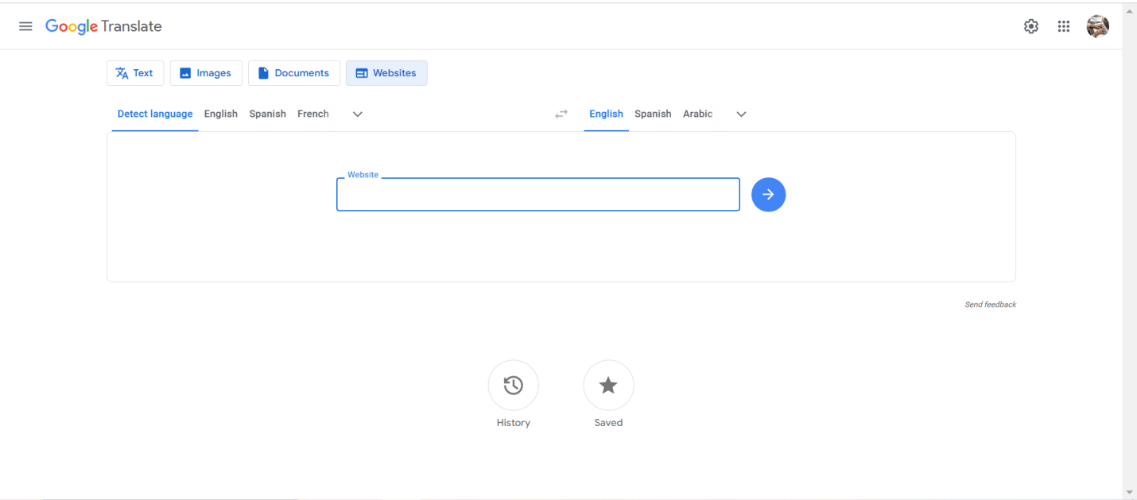


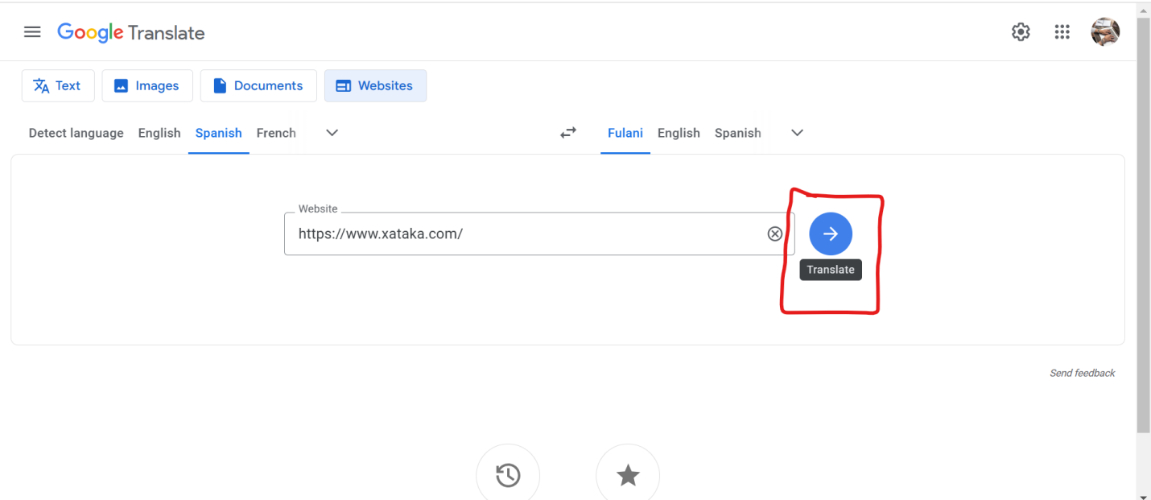
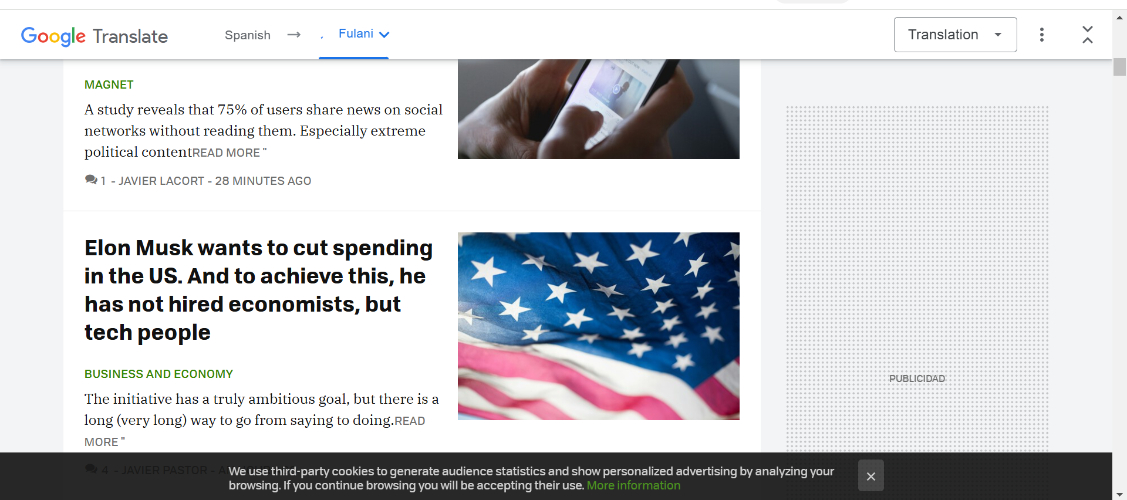
However, keep in mind that while the text will be translated, images, videos, and embedded content may not be fully converted. Google Translate works primarily on textual content and might miss non-text elements like info graphics or logos.
Why Use Google Translate Websites?
Google Translate is an excellent choice for quick, basic translations, especially for websites with text-heavy content. It’s free and easy to use, making it accessible for businesses, content creators, and anyone looking to make their website available in another language. However, its limitations become apparent when dealing with complex content such as graphics or embedded text.
Part 2: Translating Website Using PDNob Image Translator
PDNob AI Image Translator is an OCR-based (Optical Character Recognition) tool designed to translate text from images, screenshots, and graphics. It allows users to extract and translate text from images, something that Google Translate can’t handle effectively. This tool is perfect for translating websites that contain non-text elements, such as logos, infographics, or screenshots with embedded text.
- Taking Screenshots of Website Content
- Import Screenshots
- Translating the Screenshot
- Saving Translated Text
First, capture screenshots of the sections or images of the website that you want to translate. This could include banners, logos, charts, or any other graphic with embedded text.
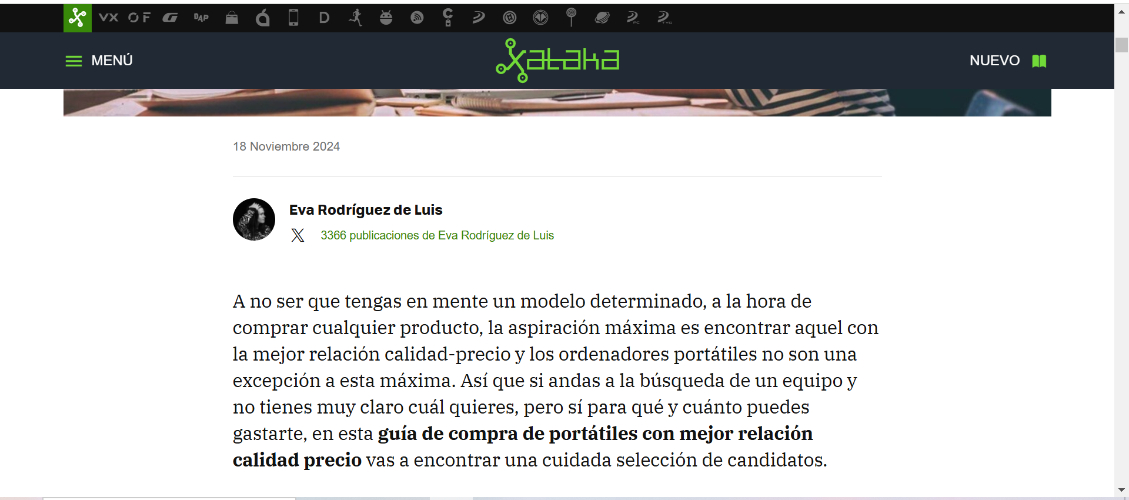
Upload the screenshots into the PDNob Image Translator on their website or app.
Select the target language and let the tool process the text in the image. The tool will use OCR to detect and extract the text from the image and then provide the translation.
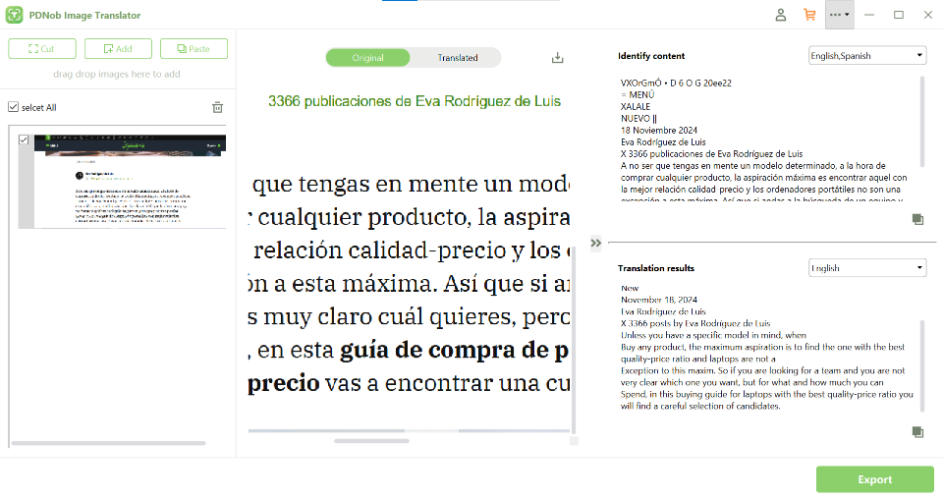
Once the translation is complete, you can save or copy the translated text for use on your website. This makes it easy to update graphical content or embedded text in your website with accurate translations.
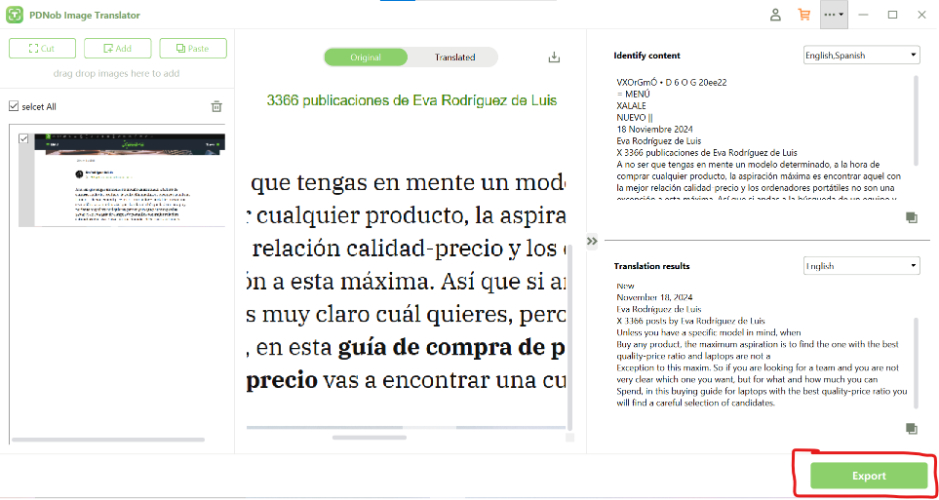
Why Use PDNob Image Translator?
PDNob Free AI Image Translator excels where Google Translate falls short. It captures text embedded in images or screenshots, making it ideal for translating logos, banners, infographics, or other non-textual elements. Websites often include visual content that carries important information in text form, which Google Translate cannot translate. PDNob Image Translator ensures that all aspects of a website, including graphical text, are translated accurately.
Part 3: Steps to Translate Website Using Google Translate on Mobile
The Google Translate mobile app offers many of the same features as the web version but allows for on-the-go translation. This app enables users to translate website to English, images, and even text from real-world objects using their smartphone camera.
- Open the Google Translate App
- Select Website Translation Option
- Enter the Website URL
- Choose Source and Target Languages
- View Translated Website
Download and launch the Google Translate app on your mobile device from the App Store or Google Play.
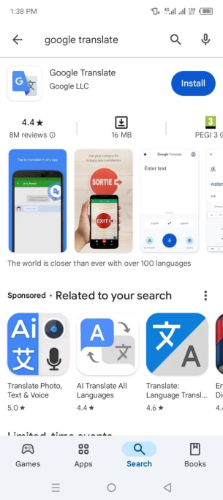
Depending on the app version, either tap on the “Camera” option or “Website” to start the translation process.

Paste the website URL you want to translate into the app’s translation box.
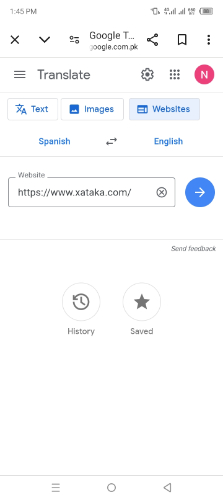
Select the source and target languages as you would on the web version.
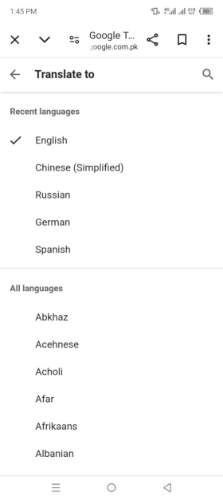
Tap the translate website link to open the translated website directly in your mobile browser.
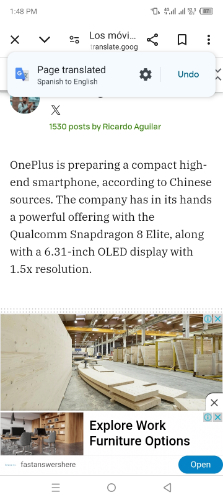
Why Translate Websites on Mobile?
Translating websites on mobile offers convenience and flexibility, especially when you're traveling or need real-time translations. Whether you're navigating a foreign language site or accessing international news, mobile translation makes it easy to browse and understand content on the go. However, as with the desktop version, there are some limitations, such as formatting and missing translations for non-text elements.
Part 4: Additional Benefits of Website Translation
Website translation comes with a wide range of benefits that can help grow your business, improve user experience, and ensure compliance with global standards.
- Increased Global Reach: By translating your website into multiple languages, you increase your potential market, reaching customers in regions where your native language isn't spoken.
- Enhanced User Experience: Multilingual content allows users to engage with your website in their preferred language, increasing satisfaction and engagement.
- SEO Benefits: A translated website can help your site rank better in search engines for different languages, improving your visibility and driving more organic traffic.
- Legal and Cultural Relevance: For some countries, translated websites are not only a convenience but a legal requirement. Additionally, translating your website ensures that you're respecting the cultural nuances and preferences of your target audience.
Why is Website Translation Important?
Website translation plays a significant role in breaking down language barriers, providing a more inclusive experience for users, and promoting cross-cultural communication. It not only enhances the user experience but also helps businesses expand their reach globally. For example, a localized website can improve the understanding of your products or services, which leads to higher engagement and conversions.
Part 5: Conclusion
Translating your website is a powerful way to expand your global presence and improve user engagement. By using tools like Google Translate for quick, text-based translations and PDNob AI Image Translator for handling images and graphical content, you can ensure your website is accessible to a broader audience. PDNob Image Translator, in particular, is highly recommended for translating non-text elements of your website, filling in the gaps left by Google Translate.
Speak Your Mind
Leave a Comment
Create your review for Tenorshare articles
 PDNob Image Translator
PDNob Image Translator
Instantly translate various types of images to text.






